 He died on December 6th 1985 in Palm Springs, California at the age of 68. He was buried in Rosehill Cemetery, 5700 North Ravenswood, Chicago. He was born Franklin Burr Tillstrom on October 13 1917 in Chicago to Dr. Bert (a foot specialist) and Alice Burr Tillstrom. We all knew him as “Burr”, a winner of five emmy’s, a genius, our lost treasure, and best remembered for his creation of “Kukla, Fran and Ollie”, the Kuklapolitan Players. The show was an important part of everyday life in the ’50s.
He died on December 6th 1985 in Palm Springs, California at the age of 68. He was buried in Rosehill Cemetery, 5700 North Ravenswood, Chicago. He was born Franklin Burr Tillstrom on October 13 1917 in Chicago to Dr. Bert (a foot specialist) and Alice Burr Tillstrom. We all knew him as “Burr”, a winner of five emmy’s, a genius, our lost treasure, and best remembered for his creation of “Kukla, Fran and Ollie”, the Kuklapolitan Players. The show was an important part of everyday life in the ’50s.
He was a true Chicagoan living on Lakewood Avenue, Granville, and Sherwin in his early years, then along Lake Michigan later on. He graduated from Senn High School on Ridge and then briefly attended the University of Chicago. He became a puppeteer as early as his high school days, using teddy bears and dolls to entertain neighborhood children. While attending the University of Chicago, he joined the WPA-Chicago Parks District’s Puppet Theater, In the mid-Thirties took his act to carnivals, fairs, and night clubs, developing his own puppets.
He was the brilliant creator, puppeteer, and raspy voice of Buelah Witch and many other memorable characters known as the Kuklapolitans. Burr Tillstrom developed his concept of Kukla, Fran and Ollie within the RCA Victor exhibit at the 1939 New York World’s Fair, where he performed more than 2,000 shows. He met radio singer Fran Allison, who would join his troupe for just a 13-week trial but she ended up staying an additional ten years. the show was simple: Fran Allison stood in front of a small stage and Burr did the rest.
 From old in the newspaper broadcasting as early as, I found a May 31 1939 newspaper television listing for exactly “Kukla, Fran and Ollie” on WNBC channel 6 and WNBT channel 4 both flagship stations of the NBC television network. This predates the Chicago show. Also In 1939, he put on a weekly Saturday morning puppet show for children at Marshall Field and Company in Chicago. He then did the first Balaban and Katz telecast over experimental station W9XBK in 1941 which later became WBKB TV in September of 1946.
From old in the newspaper broadcasting as early as, I found a May 31 1939 newspaper television listing for exactly “Kukla, Fran and Ollie” on WNBC channel 6 and WNBT channel 4 both flagship stations of the NBC television network. This predates the Chicago show. Also In 1939, he put on a weekly Saturday morning puppet show for children at Marshall Field and Company in Chicago. He then did the first Balaban and Katz telecast over experimental station W9XBK in 1941 which later became WBKB TV in September of 1946.
 The series “Kukla, Fran and Ollie” began locally in Chicago on WBKB on October 13 1947 when the majority of television sets were located in taverns and saloons. It is reported that there were only 20,000 sets in Chicago. The show was originally called Junior Jamboree, a key part of the “Chicago School” of broadcasting. Always ad-libbed, the show had no writers and appealed to both children and big people. The popularity of the show was because it was its own unique world of make-believe.
The series “Kukla, Fran and Ollie” began locally in Chicago on WBKB on October 13 1947 when the majority of television sets were located in taverns and saloons. It is reported that there were only 20,000 sets in Chicago. The show was originally called Junior Jamboree, a key part of the “Chicago School” of broadcasting. Always ad-libbed, the show had no writers and appealed to both children and big people. The popularity of the show was because it was its own unique world of make-believe. 

 The show went to Chicago’s WNBQ and on NBC’s Midwest network on nov 29 1948 and then later to ABC, opening to the East Coast in 1949 and the West Coast in 1951. In some markets, it came on after the Lone Ranger, Break the Bank, or even just after the station’s test pattern. At the height of the show’s popularity, the cast received 15,000 letters a day. By its third season, the show had six million viewers. A five minute version of the show ran between 1961-1962 on NBC. There was a PBS revival which ran between 1969-1971 and then a final syndicated version which ran between 1975-1976. There have been many reruns since.
The show went to Chicago’s WNBQ and on NBC’s Midwest network on nov 29 1948 and then later to ABC, opening to the East Coast in 1949 and the West Coast in 1951. In some markets, it came on after the Lone Ranger, Break the Bank, or even just after the station’s test pattern. At the height of the show’s popularity, the cast received 15,000 letters a day. By its third season, the show had six million viewers. A five minute version of the show ran between 1961-1962 on NBC. There was a PBS revival which ran between 1969-1971 and then a final syndicated version which ran between 1975-1976. There have been many reruns since.
 Buelah was an alumnus of Witch Normal, a school of rigid traditions. She had a nose resembling a malformed coathook that ended with a pronounced wart for good measure. She had a severe temperament visible on most occasions. You did not mess with Buelah who almost always prevailed. She had a warm heart despite her gruff exterior. She preferred black fashion but does have an ermine coat donated by a viewer. According to “sources”,, Buelah Witch was arrested by Interpol for flying too low over the United Nations building.
Buelah was an alumnus of Witch Normal, a school of rigid traditions. She had a nose resembling a malformed coathook that ended with a pronounced wart for good measure. She had a severe temperament visible on most occasions. You did not mess with Buelah who almost always prevailed. She had a warm heart despite her gruff exterior. She preferred black fashion but does have an ermine coat donated by a viewer. According to “sources”,, Buelah Witch was arrested by Interpol for flying too low over the United Nations building.
 “Kukla” was developed in 1936, the Russian word for “doll” by ballerina Tamara Toumanova during a visit to the United States. There were at least eight well worn out Kukla puppets over the years. Kukla was the “star” of the show, although we are not quite sure what he really was, maybe a small boy or a clown or ? As young as he appeared with a high pitched voice, he had no hair, was somewhat unsure of himself, but made up for it with his kindness and understanding.
“Kukla” was developed in 1936, the Russian word for “doll” by ballerina Tamara Toumanova during a visit to the United States. There were at least eight well worn out Kukla puppets over the years. Kukla was the “star” of the show, although we are not quite sure what he really was, maybe a small boy or a clown or ? As young as he appeared with a high pitched voice, he had no hair, was somewhat unsure of himself, but made up for it with his kindness and understanding.
 Oliver J. Dragon (Ollie), an alumnus of Dragon Prep, was a one-of-a-kind mischievous, one-toothed sweet dragon, living within what appeared to be a leopard skin of sorts. He often would boast the he indeed was the star of the show, not Kukla. He had a good heart but had no hands, so he relied on Kukla or Fran to hold the phone to his ear or get something from the stage. If Ollie needed Kukla not to run away, Ollie would use his mouth holding onto Kukla’s red nose while talking. Billed as ”Mr. Oliver J. Dragon, American Baritone,” Ollie sang with the Boston Pops Orchestra in the 1954 Midwest premiere of ”St. George and the Dragon” at the usually staid Chicago Opera House. An ancestor of Ollie’s supposedly once swam the Hellespont and took in too much water and thereby drowned the family’s fire-breathing ability.
Oliver J. Dragon (Ollie), an alumnus of Dragon Prep, was a one-of-a-kind mischievous, one-toothed sweet dragon, living within what appeared to be a leopard skin of sorts. He often would boast the he indeed was the star of the show, not Kukla. He had a good heart but had no hands, so he relied on Kukla or Fran to hold the phone to his ear or get something from the stage. If Ollie needed Kukla not to run away, Ollie would use his mouth holding onto Kukla’s red nose while talking. Billed as ”Mr. Oliver J. Dragon, American Baritone,” Ollie sang with the Boston Pops Orchestra in the 1954 Midwest premiere of ”St. George and the Dragon” at the usually staid Chicago Opera House. An ancestor of Ollie’s supposedly once swam the Hellespont and took in too much water and thereby drowned the family’s fire-breathing ability.
 Ollie’s mother was Olivia Dragon and Ollie’s niece was Dolores Dragon who was left when her parents went away. Over time, we watched Dolores grow from a noisy infant into a teenage dragonette.
Ollie’s mother was Olivia Dragon and Ollie’s niece was Dolores Dragon who was left when her parents went away. Over time, we watched Dolores grow from a noisy infant into a teenage dragonette.
 Grand dame Madame Ophelia Oglepuss, a prima-donna former opera diva, a retired red-haired lady, much like Buelah, had a horribly crooked nose slightly bent so she could look down on others. She brandished a quite hefty untreated wartlike growth on her right cheek. Her expensive wardrobe included a real mink stole, a gold party dress, a genuine fox hat and matching muffler, four wigs and jewelry.
Grand dame Madame Ophelia Oglepuss, a prima-donna former opera diva, a retired red-haired lady, much like Buelah, had a horribly crooked nose slightly bent so she could look down on others. She brandished a quite hefty untreated wartlike growth on her right cheek. Her expensive wardrobe included a real mink stole, a gold party dress, a genuine fox hat and matching muffler, four wigs and jewelry.  There was “Stagehand” Cecil Bill who spoke a “toy to toy toy” language somewhat incomprehensible unless you were another Kuklapolitan. Colonel Richard Hooper Crackie, was a suave Southern gentleman supposedly once engaged to Madam Oglepuss. There was the floppy-eared Fletcher Rabbit, the postman to the troupe. There also was the naughty child Mercedes, Clara Coo Coo, Goultar, and others, all from Burr’s fertile imagination.
There was “Stagehand” Cecil Bill who spoke a “toy to toy toy” language somewhat incomprehensible unless you were another Kuklapolitan. Colonel Richard Hooper Crackie, was a suave Southern gentleman supposedly once engaged to Madam Oglepuss. There was the floppy-eared Fletcher Rabbit, the postman to the troupe. There also was the naughty child Mercedes, Clara Coo Coo, Goultar, and others, all from Burr’s fertile imagination.
 Fran Allison was born Francis Helen Allison on November 20, 1907 in La Porte City Iowa to Jesse and Anna Halpin Allison. She began her career as a schoolteacher, later a songstress on Iowa radio programs and eventually moved to Chicago in 1937, where she was hired as a singer and personality on NBC Radio. On the KFO show she was the comforting, ever patient, easygoing hostess, kind of the ‘straight man’, and according to Tillstrom, “bigsister, favorite teacher, baby-sitter, girlfriend, and mother.” Fran died on June 13, 1989 at the age of 81 in Sherman Oaks California. She was buried in her home state in Mount Calvary Cemetery, Cedar Rapids, Iowa
Fran Allison was born Francis Helen Allison on November 20, 1907 in La Porte City Iowa to Jesse and Anna Halpin Allison. She began her career as a schoolteacher, later a songstress on Iowa radio programs and eventually moved to Chicago in 1937, where she was hired as a singer and personality on NBC Radio. On the KFO show she was the comforting, ever patient, easygoing hostess, kind of the ‘straight man’, and according to Tillstrom, “bigsister, favorite teacher, baby-sitter, girlfriend, and mother.” Fran died on June 13, 1989 at the age of 81 in Sherman Oaks California. She was buried in her home state in Mount Calvary Cemetery, Cedar Rapids, Iowa
And lastly, Beulah Zachary born August 13, 1911 was the executive producer of the Kukla, Fran and Ollie show and who was the namesake of Buelah Witch (note intentional misspelling). She died February 3, 1959 in a New York City plane crash.
 We will miss each and every one of the kids, Fran and especially Burr who entertained us all in a far simpler time with innovative and quality entertainment.
We will miss each and every one of the kids, Fran and especially Burr who entertained us all in a far simpler time with innovative and quality entertainment. Thank you.
Thank you.


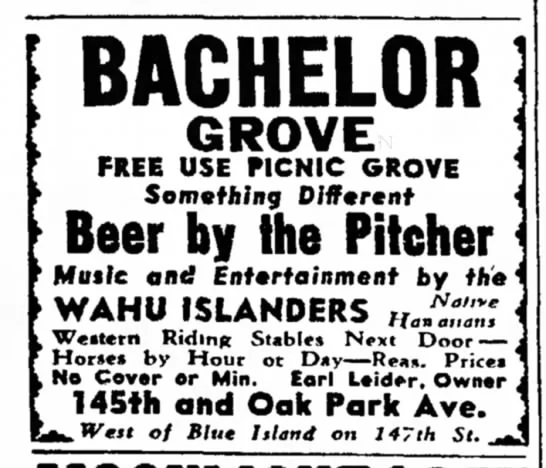

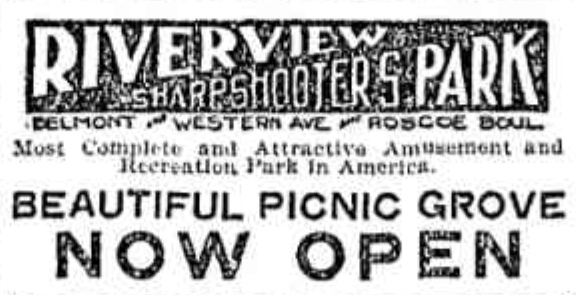
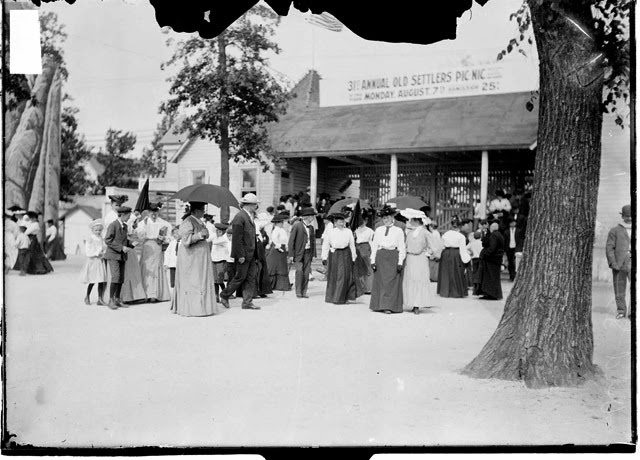
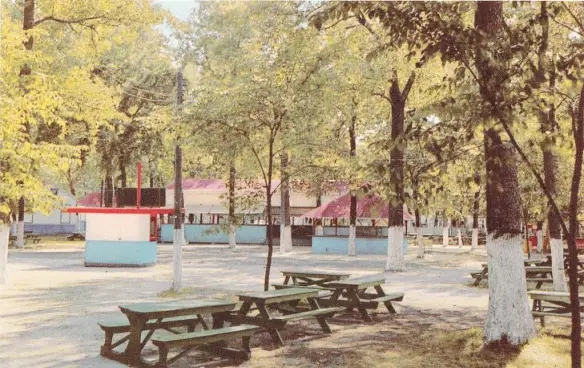
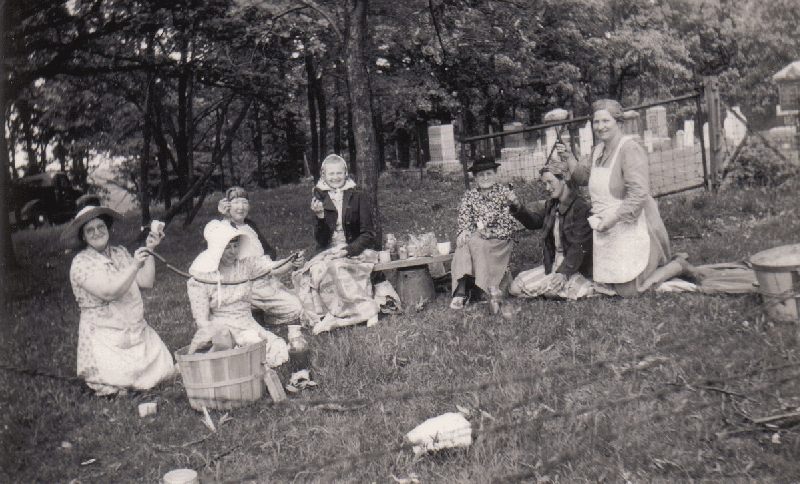

 It is late on Christmas Eve and the cemetery gate is locked. The rest of Chicago is a mix of holiday activities and wintry winds.
It is late on Christmas Eve and the cemetery gate is locked. The rest of Chicago is a mix of holiday activities and wintry winds. Although going to a graveyard might seem an unlikely activity for the festive season, There are exceptions worth noting. In Finland, hundreds of graveside candles glowing in the snow make a wonderful holiday statement. Placing candles on the graves of deceased relatives at Christmastime is a wonderful tradition. As many as three-quarters of Finnish families visit a cemetery at Christmas, mostly on Christmas Eve.
Although going to a graveyard might seem an unlikely activity for the festive season, There are exceptions worth noting. In Finland, hundreds of graveside candles glowing in the snow make a wonderful holiday statement. Placing candles on the graves of deceased relatives at Christmastime is a wonderful tradition. As many as three-quarters of Finnish families visit a cemetery at Christmas, mostly on Christmas Eve.
 For many years, florists and cemeteries themselves offer “grave blankets” or a wreath for the mausoleum door. They are commonly made of a variety of evergreen boughs. Most also have colorful, seasonal decorations such as ribbons, ornaments or pine cones. They seem to have been most popular in the upper Midwest where early settlers went out into the woods gathering pine branches to cover an ancestor’s grave. They seem to be less popular these days, but still create a graveside focal point and a way to reminisce and remember. The grave blanket covers the ground at the base of the grave and symbolizes the caring and warmth that friends and family feel toward the deceased person and gives some level of comfort during the holidays .
For many years, florists and cemeteries themselves offer “grave blankets” or a wreath for the mausoleum door. They are commonly made of a variety of evergreen boughs. Most also have colorful, seasonal decorations such as ribbons, ornaments or pine cones. They seem to have been most popular in the upper Midwest where early settlers went out into the woods gathering pine branches to cover an ancestor’s grave. They seem to be less popular these days, but still create a graveside focal point and a way to reminisce and remember. The grave blanket covers the ground at the base of the grave and symbolizes the caring and warmth that friends and family feel toward the deceased person and gives some level of comfort during the holidays . 

 Back about 1900, Rosehill Cemetery on Chicago’s north side actually had a horse drawn sleigh to transport family to and from the gravesite. An outdoor fireplace offered warmth on cold winter day and offered an afternoon of Christmas music, refreshments and “holiday cheer“. In a cemetery out east people gather around a 15-foot Fir tree A children’s choir sing hymns and Christmas carols; a tent holds hot drinks and pastries. The Archbishop blesses the tree, and visitors are invited to hang spherical glass ornaments on the tree in memory of loved ones.
Back about 1900, Rosehill Cemetery on Chicago’s north side actually had a horse drawn sleigh to transport family to and from the gravesite. An outdoor fireplace offered warmth on cold winter day and offered an afternoon of Christmas music, refreshments and “holiday cheer“. In a cemetery out east people gather around a 15-foot Fir tree A children’s choir sing hymns and Christmas carols; a tent holds hot drinks and pastries. The Archbishop blesses the tree, and visitors are invited to hang spherical glass ornaments on the tree in memory of loved ones.

 He died on December 6th 1985 in Palm Springs, California at the age of 68. He was buried in Rosehill Cemetery, 5700 North Ravenswood, Chicago. He was born Franklin Burr Tillstrom on October 13 1917 in Chicago to Dr. Bert (a foot specialist) and Alice Burr Tillstrom. We all knew him as “Burr”, a winner of five emmy’s, a genius, our lost treasure, and best remembered for his creation of “Kukla, Fran and Ollie”, the Kuklapolitan Players. The show was an important part of everyday life in the ’50s.
He died on December 6th 1985 in Palm Springs, California at the age of 68. He was buried in Rosehill Cemetery, 5700 North Ravenswood, Chicago. He was born Franklin Burr Tillstrom on October 13 1917 in Chicago to Dr. Bert (a foot specialist) and Alice Burr Tillstrom. We all knew him as “Burr”, a winner of five emmy’s, a genius, our lost treasure, and best remembered for his creation of “Kukla, Fran and Ollie”, the Kuklapolitan Players. The show was an important part of everyday life in the ’50s. From old in the newspaper broadcasting as early as, I found a May 31 1939 newspaper television listing for exactly “Kukla, Fran and Ollie” on WNBC channel 6 and WNBT channel 4 both flagship stations of the NBC television network. This predates the Chicago show. Also In 1939, he put on a weekly Saturday morning puppet show for children at Marshall Field and Company in Chicago. He then did the first Balaban and Katz telecast over experimental station W9XBK in 1941 which later became WBKB TV in September of 1946.
From old in the newspaper broadcasting as early as, I found a May 31 1939 newspaper television listing for exactly “Kukla, Fran and Ollie” on WNBC channel 6 and WNBT channel 4 both flagship stations of the NBC television network. This predates the Chicago show. Also In 1939, he put on a weekly Saturday morning puppet show for children at Marshall Field and Company in Chicago. He then did the first Balaban and Katz telecast over experimental station W9XBK in 1941 which later became WBKB TV in September of 1946. The series “Kukla, Fran and Ollie” began locally in Chicago on WBKB on October 13 1947 when the majority of television sets were located in taverns and saloons. It is reported that there were only 20,000 sets in Chicago. The show was originally called Junior Jamboree, a key part of the “Chicago School” of broadcasting. Always ad-libbed, the show had no writers and appealed to both children and big people. The popularity of the show was because it was its own unique world of make-believe.
The series “Kukla, Fran and Ollie” began locally in Chicago on WBKB on October 13 1947 when the majority of television sets were located in taverns and saloons. It is reported that there were only 20,000 sets in Chicago. The show was originally called Junior Jamboree, a key part of the “Chicago School” of broadcasting. Always ad-libbed, the show had no writers and appealed to both children and big people. The popularity of the show was because it was its own unique world of make-believe. 

 The show went to Chicago’s WNBQ and on NBC’s Midwest network on nov 29 1948 and then later to ABC, opening to the East Coast in 1949 and the West Coast in 1951. In some markets, it came on after the Lone Ranger, Break the Bank, or even just after the station’s test pattern. At the height of the show’s popularity, the cast received 15,000 letters a day. By its third season, the show had six million viewers. A five minute version of the show ran between 1961-1962 on NBC. There was a PBS revival which ran between 1969-1971 and then a final syndicated version which ran between 1975-1976. There have been many reruns since.
The show went to Chicago’s WNBQ and on NBC’s Midwest network on nov 29 1948 and then later to ABC, opening to the East Coast in 1949 and the West Coast in 1951. In some markets, it came on after the Lone Ranger, Break the Bank, or even just after the station’s test pattern. At the height of the show’s popularity, the cast received 15,000 letters a day. By its third season, the show had six million viewers. A five minute version of the show ran between 1961-1962 on NBC. There was a PBS revival which ran between 1969-1971 and then a final syndicated version which ran between 1975-1976. There have been many reruns since. Buelah was an alumnus of Witch Normal, a school of rigid traditions. She had a nose resembling a malformed coathook that ended with a pronounced wart for good measure. She had a severe temperament visible on most occasions. You did not mess with Buelah who almost always prevailed. She had a warm heart despite her gruff exterior. She preferred black fashion but does have an ermine coat donated by a viewer. According to “sources”,, Buelah Witch was arrested by Interpol for flying too low over the United Nations building.
Buelah was an alumnus of Witch Normal, a school of rigid traditions. She had a nose resembling a malformed coathook that ended with a pronounced wart for good measure. She had a severe temperament visible on most occasions. You did not mess with Buelah who almost always prevailed. She had a warm heart despite her gruff exterior. She preferred black fashion but does have an ermine coat donated by a viewer. According to “sources”,, Buelah Witch was arrested by Interpol for flying too low over the United Nations building. “Kukla” was developed in 1936, the Russian word for “doll” by ballerina Tamara Toumanova during a visit to the United States. There were at least eight well worn out Kukla puppets over the years. Kukla was the “star” of the show, although we are not quite sure what he really was, maybe a small boy or a clown or ? As young as he appeared with a high pitched voice, he had no hair, was somewhat unsure of himself, but made up for it with his kindness and understanding.
“Kukla” was developed in 1936, the Russian word for “doll” by ballerina Tamara Toumanova during a visit to the United States. There were at least eight well worn out Kukla puppets over the years. Kukla was the “star” of the show, although we are not quite sure what he really was, maybe a small boy or a clown or ? As young as he appeared with a high pitched voice, he had no hair, was somewhat unsure of himself, but made up for it with his kindness and understanding. Oliver J. Dragon (Ollie), an alumnus of Dragon Prep, was a one-of-a-kind mischievous, one-toothed sweet dragon, living within what appeared to be a leopard skin of sorts. He often would boast the he indeed was the star of the show, not Kukla. He had a good heart but had no hands, so he relied on Kukla or Fran to hold the phone to his ear or get something from the stage. If Ollie needed Kukla not to run away, Ollie would use his mouth holding onto Kukla’s red nose while talking. Billed as ”Mr. Oliver J. Dragon, American Baritone,” Ollie sang with the Boston Pops Orchestra in the 1954 Midwest premiere of ”St. George and the Dragon” at the usually staid Chicago Opera House. An ancestor of Ollie’s supposedly once swam the Hellespont and took in too much water and thereby drowned the family’s fire-breathing ability.
Oliver J. Dragon (Ollie), an alumnus of Dragon Prep, was a one-of-a-kind mischievous, one-toothed sweet dragon, living within what appeared to be a leopard skin of sorts. He often would boast the he indeed was the star of the show, not Kukla. He had a good heart but had no hands, so he relied on Kukla or Fran to hold the phone to his ear or get something from the stage. If Ollie needed Kukla not to run away, Ollie would use his mouth holding onto Kukla’s red nose while talking. Billed as ”Mr. Oliver J. Dragon, American Baritone,” Ollie sang with the Boston Pops Orchestra in the 1954 Midwest premiere of ”St. George and the Dragon” at the usually staid Chicago Opera House. An ancestor of Ollie’s supposedly once swam the Hellespont and took in too much water and thereby drowned the family’s fire-breathing ability. Ollie’s mother was Olivia Dragon and Ollie’s niece was Dolores Dragon who was left when her parents went away. Over time, we watched Dolores grow from a noisy infant into a teenage dragonette.
Ollie’s mother was Olivia Dragon and Ollie’s niece was Dolores Dragon who was left when her parents went away. Over time, we watched Dolores grow from a noisy infant into a teenage dragonette. Grand dame Madame Ophelia Oglepuss, a prima-donna former opera diva, a retired red-haired lady, much like Buelah, had a horribly crooked nose slightly bent so she could look down on others. She brandished a quite hefty untreated wartlike growth on her right cheek. Her expensive wardrobe included a real mink stole, a gold party dress, a genuine fox hat and matching muffler, four wigs and jewelry.
Grand dame Madame Ophelia Oglepuss, a prima-donna former opera diva, a retired red-haired lady, much like Buelah, had a horribly crooked nose slightly bent so she could look down on others. She brandished a quite hefty untreated wartlike growth on her right cheek. Her expensive wardrobe included a real mink stole, a gold party dress, a genuine fox hat and matching muffler, four wigs and jewelry.  There was “Stagehand” Cecil Bill who spoke a “toy to toy toy” language somewhat incomprehensible unless you were another Kuklapolitan. Colonel Richard Hooper Crackie, was a suave Southern gentleman supposedly once engaged to Madam Oglepuss. There was the floppy-eared Fletcher Rabbit, the postman to the troupe. There also was the naughty child Mercedes, Clara Coo Coo, Goultar, and others, all from Burr’s fertile imagination.
There was “Stagehand” Cecil Bill who spoke a “toy to toy toy” language somewhat incomprehensible unless you were another Kuklapolitan. Colonel Richard Hooper Crackie, was a suave Southern gentleman supposedly once engaged to Madam Oglepuss. There was the floppy-eared Fletcher Rabbit, the postman to the troupe. There also was the naughty child Mercedes, Clara Coo Coo, Goultar, and others, all from Burr’s fertile imagination. Fran Allison was born Francis Helen Allison on November 20, 1907 in La Porte City Iowa to Jesse and Anna Halpin Allison. She began her career as a schoolteacher, later a songstress on Iowa radio programs and eventually moved to Chicago in 1937, where she was hired as a singer and personality on NBC Radio. On the KFO show she was the comforting, ever patient, easygoing hostess, kind of the ‘straight man’, and according to Tillstrom, “bigsister, favorite teacher, baby-sitter, girlfriend, and mother.” Fran died on June 13, 1989 at the age of 81 in Sherman Oaks California. She was buried in her home state in Mount Calvary Cemetery, Cedar Rapids, Iowa
Fran Allison was born Francis Helen Allison on November 20, 1907 in La Porte City Iowa to Jesse and Anna Halpin Allison. She began her career as a schoolteacher, later a songstress on Iowa radio programs and eventually moved to Chicago in 1937, where she was hired as a singer and personality on NBC Radio. On the KFO show she was the comforting, ever patient, easygoing hostess, kind of the ‘straight man’, and according to Tillstrom, “bigsister, favorite teacher, baby-sitter, girlfriend, and mother.” Fran died on June 13, 1989 at the age of 81 in Sherman Oaks California. She was buried in her home state in Mount Calvary Cemetery, Cedar Rapids, Iowa We will miss each and every one of the kids, Fran and especially Burr who entertained us all in a far simpler time with innovative and quality entertainment.
We will miss each and every one of the kids, Fran and especially Burr who entertained us all in a far simpler time with innovative and quality entertainment. Thank you.
Thank you.